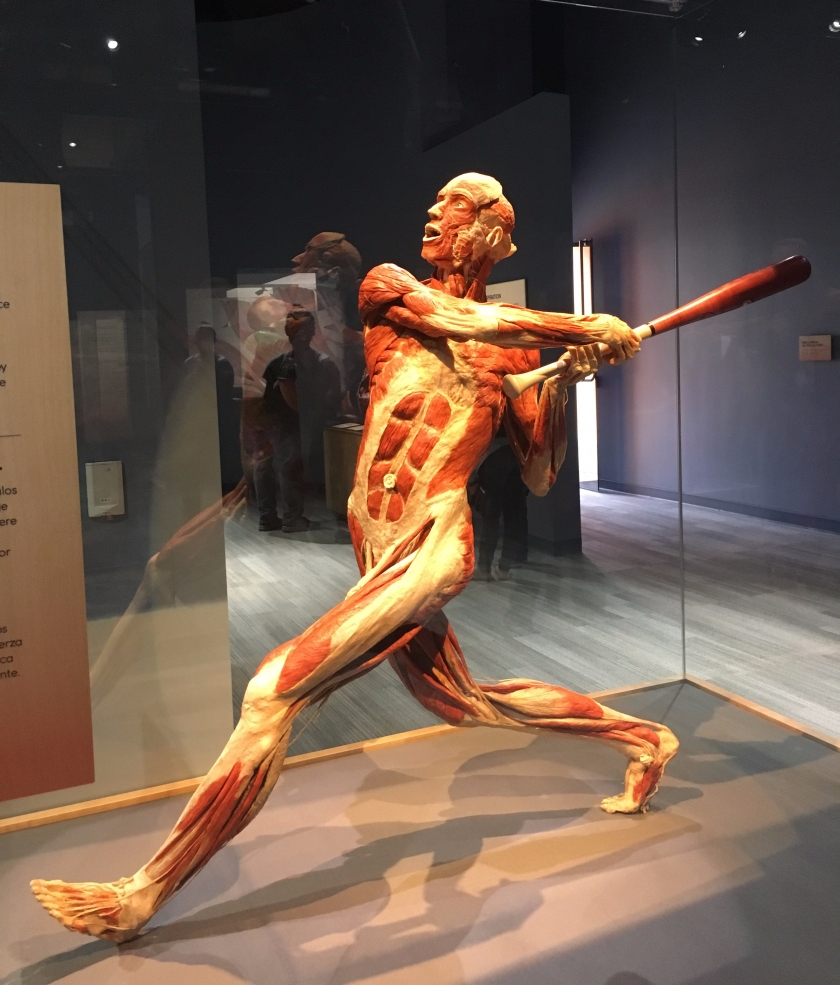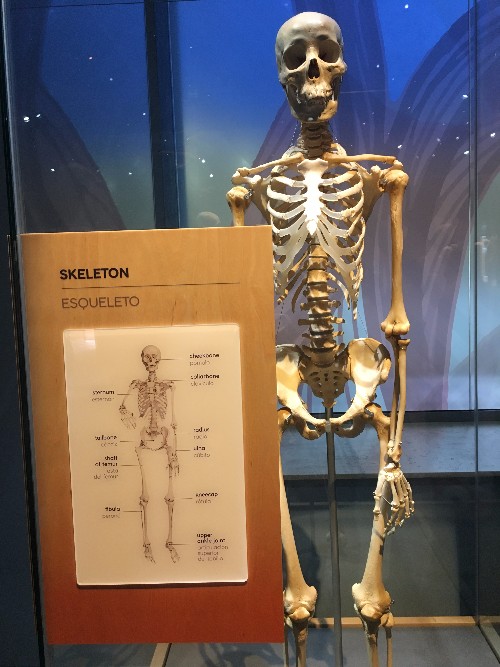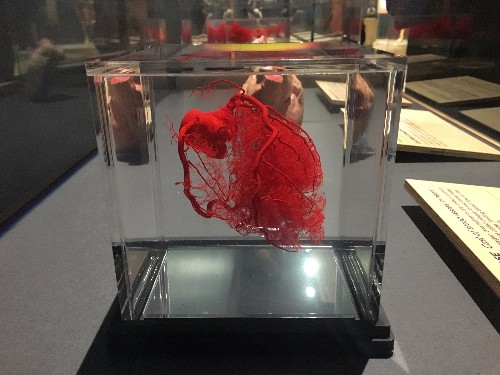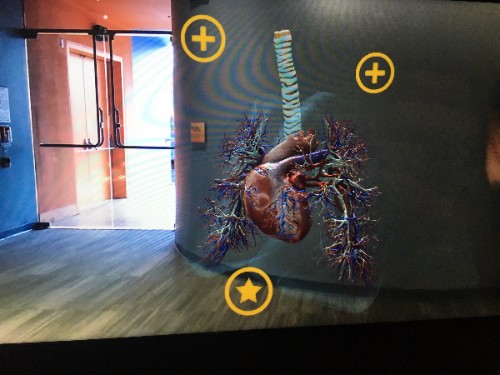
What you see above is a real human body whose home is at the Body Worlds exhibit within the Tech Museum of Innovation! This is one of several displays from generous donors who specifically devote their bodies to be preserved by Body Worlds, either on display for interested laypeople to view in museums or for usage in the training of medical students learning anatomy.
The bodies are ‘frozen in time’ and provide a more realistic, in-depth view of human anatomy than any other preservation technique. Plastination, the process invented by German anatomist Dr. Gunther von Hagens wherein plastic is incorporated into the body’s tissues, is the process that produces this impressive and imperishable display called a plastinate. See the bottom of this post for a video that goes into depth about the various stages of the process–it is a somewhat strange and fascinating art!
I found the Body Worlds gallery to be magnificent. I have been on several field trips to cadaver labs where I could see and sometimes participate in specimen dissections, but Body Worlds provides a very pristine and undisturbed look at the individual structures inside of us (sans liquids and fats): nerves, organs, muscles, ligaments, tendons, blood vessels, and bones. Different plastinates had different layers of tissue to demonstrate various body systems: the skeletal, musculoskeletal, nervous, ligament, and reproductive systems just to name a few.

One thing that surprised me was the lungs on many of the plastinates, which were blackened by continued exposure to the toxins of cigarette smoke. This little feature helped me grasp the fact that these plastinates were once real people like you and me, and I can certainly see the value in showing real, imperfect anatomy.
Just as models and diagrams are simplified versions of the topics they show, traditional anatomical statues and illustrations are very limiting and idealized. They are useful in teaching general knowledge, but they are not accurate in representing the uniqueness of each and every person’s body. This is an especially important factor for med school students, who will be interacting with real patients from a wide range of histories and demographics. Personalized medicine is the future of healthcare and could be paramount even in conquering cancer… Stay tuned!

Studying and viewing anatomy in this way was actually a bit humbling. All too often, I think we as humans forget what we are, so connecting to this raw side of humanity is important to me. There is an intricacy and a sense of organic craftsmanship that never fails to amaze me, and it’s inside each and every one of us! That is surely something to appreciate. However, that does not mean it is necessarily suitable for all viewers. Some people are not accustomed to viewing anatomy in such a bold state and, for their own sake, might want to give this exhibit a pass.
At this Body Worlds gallery in particular, there was an augmented reality aspect to add to the experience. We were able to use iPad-like devices which scanned different displays and provided virtual depictions of anatomy for further interaction. This was a really cool feature that connected technology directly to the real world.

Body Worlds was not the only attraction we explored on the field trip. At the Tech Museum, there were several neat exhibits harnessing the wonders of technology, the scientific approach, social justice, design-thinking examinations, and more. One area of the museum had several ‘pods’ with touch-screen televisions playing an interactive film about the applications of technological and scientific innovation.
For example, one station introduced the issue of early onset blindness in India as a consequence of insufficient access to optometrists and regular eye exams. One little boy’s mother worked in construction and was rendered unable to work as her eyesight began to fade. However, with the integration of a new medical apparatus that was portable and relatively inexpensive, the boy’s mother and thousands of other patients were able to receive consultations and treatments for their blindness. This is just one instance of science being used to better the world–it even correlates to this year’s Hallmark, #3: We educate for and act on behalf of justice and peace in the world.
I would definitely say that Body Worlds was the pinnacle of the experience, and I would love to go see it again one day with a family member. Future generations of AP Bio rockstars (and Environmental Science/Sports Medicine peers) should absolutely receive the opportunity to explore Body Worlds and the Tech Museum of Innovation.
Take a look at the video below if your interest is captured! It goes into detail about the process of plastinating the corpses for Body Worlds. This includes soaking the bodies in formaldehyde to prevent decomposition, extracting the water from within the cells in an acetone bath, dissolving their fats and liquids, submerging them in liquid silicone with a vacuum, drip-drying excess plastic, positioning, and finally curing them with a sealed gas.
(Warning: not for the faint of heart!)
*I would like to thank my fellow AP Bio teammate, Emma, for allowing me to include these photos, taken by her, in my post! My device was out of battery on the day of the field trip, so I was unfortunately unable to capture pictures of my own. Check out her blog post about Body Worlds by clicking right here!
